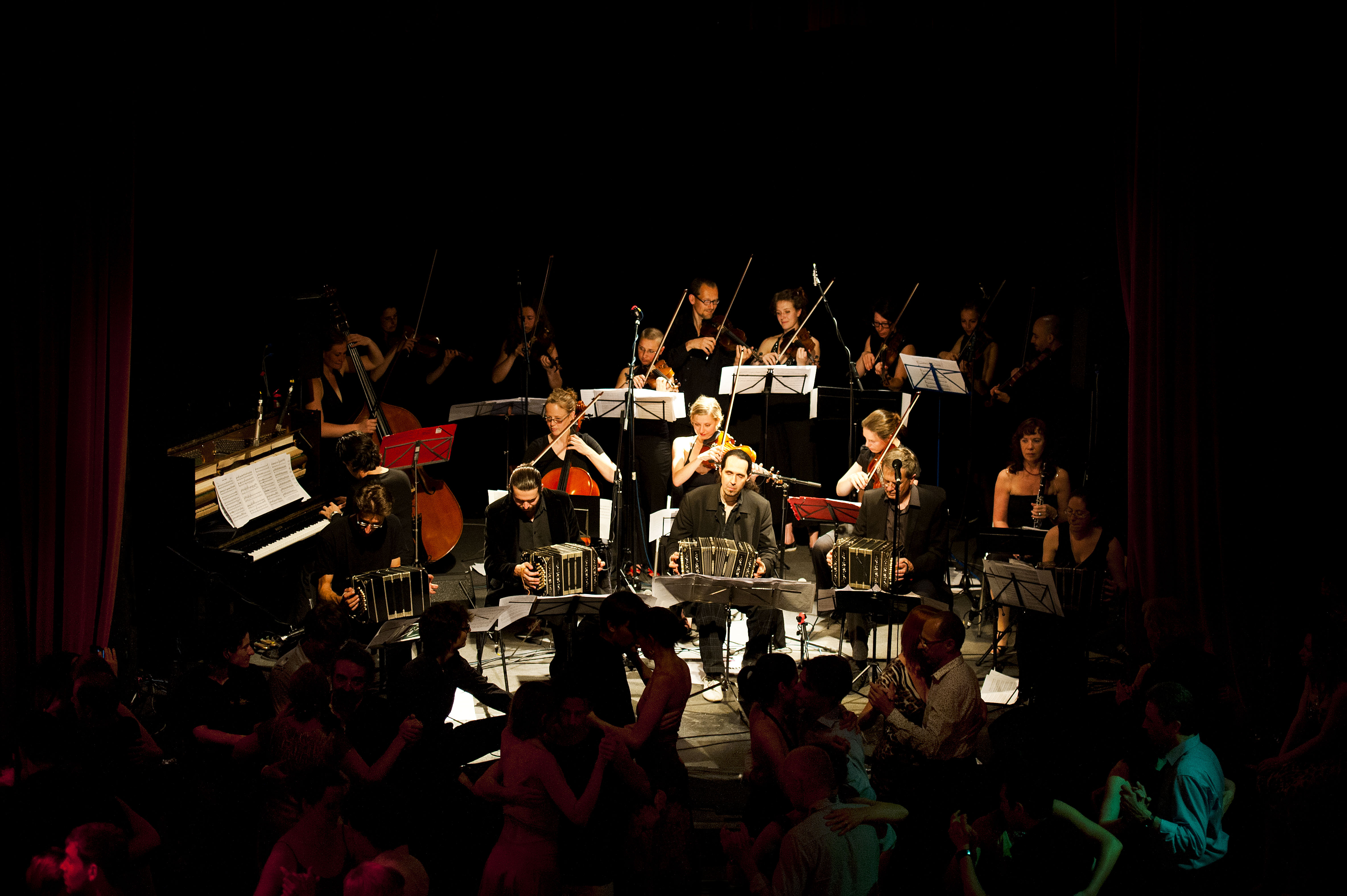The Community Tango Orchestra
A project to revitalize live music for Argentine Tango social dance
The community tango orchestra project is a response to several opportunities in tango in the early 21st century.
Musicians and dance historians explain the phenomenon of Golden Era Tango music in very practical terms. The musicians were playing music constantly for dancers. In many cases, multiple gigs each night. The financial success of the orquesta depended on the response of the dancers, and so a very natural symbiosis occurred. Music and dance — each depending on, and being enriched by the other.
In our time, very few tango communities enjoy frequent live music for dancers; the present economy of social tango creates significant challenges for live ensembles and organizers. Opportunities for musicians to play for dancers are infrequent, and the cost of presenting a full professional orquesta tipcia (10-12 people) is beyond the budget of most ongoing dance events. This scarcity of performance opportunities, in turn, increases the per event production/preparation costs for the ensemble. As a result, tango music gets adapted for smaller ensembles, less preparation, and musicians develop their craft away from the dance hall.
At the same time, there is a rich, and under-developed resource within our community. A surprising number of tango dancers have a great deal of musical training and proficiency. And increasing numbers of dancers are inspired to learn an instrument through their experience in the dance. The primary mission of a community dance orchestra is to create a sense of community and cooperation amongst these dancers/musicians, while providing quality resources and guidance for creating music for tango dancers. We create opportunities for amature/recreational musicians to participate in the social function of dance music.
We want opportunities for the music and dance to develop together around the shared joys of creating. To facilitate this, we offer a low cost (or no cost) ensemble to organizers in our communities. The community orchestra is comprised largely of dancers who already share the motivation to create good music for dancing. We create this music for our own enjoyment, and the enjoyment of our friends on the dance floor.
The hope is that appreciation for live music will ultimately create a more sustainable market for professional live music at milongas, and that the community orchestra could be a starting point or connecting point for musicians who aspire to create music for dancers professionally.
In November 2009, Korey (with the support of Mercurio Tango) founded the Community Tango Orchestra of Washington DC, which currently has 20 members and a repertory of about 10 songs. Currently, Korey is initiating similar ensembles in Berlin and at George Mason University in Maryland. These ensembles provide an excellent opportunities to test the materials (arrangements and learning resources) that will ultimately become part of the ongoing support for this project.
